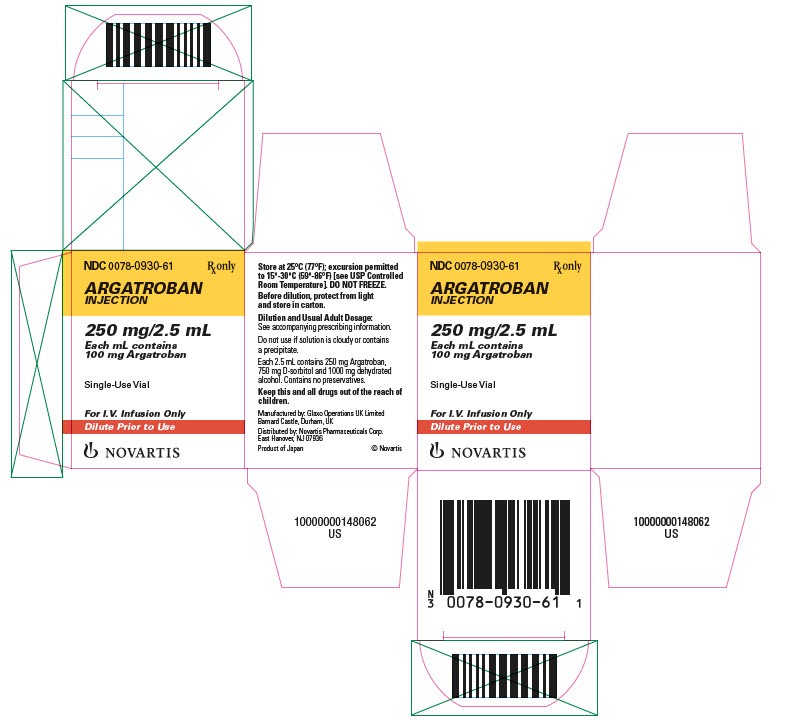
argatroban – injection
Medication Uses How To Use Side Effects Precautions Drug Interactions Overdose Notes Missed Dose Storage USES: Argatroban is a type of "blood thinner" used instead of heparin to prevent blood clots during certain procedures to open up the blood vessels in the heart (e.g., balloon angioplasty, coronary stent placement, percutaneous coronary intervention-PCI). It is usually used with aspirin. It is also used to treat and prevent harmful blood clots and increase platelets in patients who have had a reaction to heparin (e.g., heparin-induced thrombocytopenia-HIT). Argatroban works by blocking a certain natural substance (thrombin) that the body uses to form blood clots. Blood clots can cause a heart attack, stroke, gangrene, or cause the opened blood vessel in the heart to close back up. HOW TO USE: Follow all instructions for proper mixing and dilution with the correct IV fluids. If you have questions about using this medication properly, consult your pharmacist.Before using this product, check it visually for particles or discoloration. If either is present, do not use the liquid.This medication is usually given by injection into a vein over 3 to 5 minutes (bolus dose) by a health care professional before your procedure. It is then given slowly into a vein (by infusion) during your procedure. More bolus doses may be given during the procedure. The infusion may be continued after your procedure as directed by your doctor.If you are being treated for a platelet problem (e.g., HIT), the drug is usually given slowly into a vein without a bolus dose or as directed by your doctor.The dosage is based on your weight, medical condition, and response to treatment. Your doctor will order blood-clotting tests to find the best dose for you.After your procedure, you will need to lie very still with your head up slightly. The tube for your procedure is usually placed near the groin. Keep the leg (or other limb nearest the tube) straight to prevent bleeding from the tube area. Pressure will be applied to the area (e.g., with a sandbag, special pressure dressing/device). You will not be allowed out of bed for several hours after the procedure. SIDE EFFECTS: Nausea, vomiting, diarrhea, fever, or minor bleeding/irritation at the injection site may occur. If any of these effects persist or worsen, tell your doctor or pharmacist promptly.Remember that your doctor has prescribed this medication because he or she has judged that the benefit to you is greater than the risk of side effects. Many people using this medication do not have serious side effects.Tell your doctor immediately if this unlikely but serious side effect occurs: dizziness.Serious bleeding is the most common serious side effect. Tell your doctor immediately if any of these signs of serious bleeding occur: bleeding/bruising/swelling/oozing around the area where the procedure tube was placed, uncontrolled nosebleed, fast/irregular heartbeat, pale/gray/bluish skin, pink/red urine, bloody/black/tarry stool, coughing up blood, vomit that looks like coffee grounds.Seek immediate medical attention if any of these signs of very serious bleeding occur: chest pain, vision problems, confusion, slurred speech, weakness on one side of the body.A very serious allergic reaction to this drug is rare. However, seek immediate medical attention if you notice any symptoms of a serious allergic reaction, including: rash, itching/swelling (especially of the face/tongue/throat), severe dizziness, trouble breathing.This is not a complete list of possible side effects. If you notice other effects not listed above, contact your doctor or pharmacist.In the US -Call your doctor for medical advice about side effects. You may report side effects to FDA at 1-800-FDA-1088.In Canada – Call your doctor for medical advice about side effects. You may report side effects to Health Canada at 1-866-234-2345.
PRECAUTIONS: Before using argatroban, tell your doctor or pharmacist if you are allergic to it; or if you have any other allergies.This medication should not be used if you have certain medical conditions. Before using this medicine, consult your doctor or pharmacist if you have: current bleeding.Before using this medication, tell your doctor or pharmacist your medical history, especially of: recent major surgery/injury/other bleeding, stomach/intestinal problems (e.g., peptic ulcer, inflammatory bowel disease), bleeding problems (e.g., anemia, coagulopathy, thrombocytopenia), liver disease, stroke, very high uncontrolled blood pressure, tumor/blood vessel problem in the brain (e.g., aneurysm, AV malformation), bleeding/surgery in the eye (e.g., retinal hemorrhage), lumbar puncture/spinal anesthesia.During pregnancy, this medication should be used only when clearly needed. Discuss the risks and benefits with your doctor.It is not known whether this drug passes into breast milk. It could have undesirable effects on a nursing infant. Therefore, breast-feeding is not recommended while using this drug. Consult your doctor before breast-feeding. DRUG INTERACTIONS: Your doctor or pharmacist may already be aware of any possible drug interactions and may be monitoring you for them. Do not start, stop, or change the dosage of any medicine before checking with your doctor or pharmacist first.This drug should not be used with the following medication because very serious interactions may occur: mifepristone.If you are currently using this medication listed above, tell your doctor or pharmacist before starting argatroban.Before using this medication, tell your doctor or pharmacist of all prescription and nonprescription/herbal products you may use, especially of: other "blood thinners" (e.g., warfarin), NSAIDs (e.g., ibuprofen, naproxen), anti-platelet drugs (e.g., dipyridamole, ticlopidine), medications that interact with alcohol (e.g., disulfiram, metronidazole), tipranavir.Check all prescription and nonprescription medicine labels carefully since many contain pain relievers/fever reducers (NSAIDs such as ibuprofen, naproxen, or aspirin) that can increase your risk of bleeding.Argatroban is often used with other "blood thinners" such as aspirin, warfarin, and clopidogrel. Ask your doctor or pharmacist which medicines you need to take after leaving the hospital. Low-dose aspirin should be continued if prescribed by your doctor for heart attack or stroke prevention (usually at dosages of 81-325 milligrams a day). Consult your doctor or pharmacist for more details.This product can affect the results of certain lab tests (e.g., INR), possibly causing false test results. Make sure laboratory personnel and all your doctors know you use this drug.This document does not contain all possible interactions. Therefore, before using this product, tell your doctor or pharmacist of all the products you use. Keep a list of all your medications with you, and share the list with your doctor and pharmacist.
QUESTION
OVERDOSE: If overdose is suspected, contact your local poison control center or emergency room immediately. US residents can call the US National Poison Hotline at 1-800-222-1222. Canada residents can call a provincial poison control center. NOTES: Laboratory and/or medical tests (e.g., bleeding times, complete blood count) should be performed periodically to monitor your progress or check for side effects. Consult your doctor for more details. MISSED DOSE: If your dose is stopped or interrupted, contact the doctor immediately to establish a new dosing schedule/rate. STORAGE: Store the unopened vials at room temperature (77 degrees F or 25 degrees C) away from light. Brief storage between 59-86 degrees F (15-30 degrees C) is permitted. Do not freeze. Discard unused liquid after opening vial.After mixing, the solution my be stored at room temperature for 24 hours away from light. Do not expose to direct sunlight. See product labeling for more storage information. Keep all medicines out of reach of children and pets.Do not flush medications down the toilet or pour them into a drain unless instructed to do so. Properly discard this product when it is expired or no longer needed. Consult your pharmacist or local waste disposal company for more details about how to safely discard your product.MEDICAL ALERT: Your condition can cause complications in a medical emergency. For information about enrolling in MedicAlert, call 1-800-854-1166 (USA) or 1-800-668-1507 (Canada).


